SEO
10 Major SEO Mistakes (And How to Avoid Them)
Are you making these SEO mistakes?
If you are, you should be aware. These are big mistakes—ones that could affect your chances of ranking higher on the search engines.
Continue reading to find out if they apply to your SEO and learn how to avoid them:
- Not doing keyword research
- Not matching search intent
- Targeting keywords that are too difficult
- Not building enough backlinks
- Breaking Google’s Terms of Service when building links
- Missing internal link opportunities
- Not letting Google crawl your content
- Not letting Google index your content
- Having an extremely slow site
- Treating SEO as a one-time thing
Many website owners randomly create content and think they’ll get search traffic. But if nobody’s searching for those topics, then they won’t be clicking through to any pages.
Translation: zero search traffic.
That’s likely one of the reasons why 90.63% of pages get no traffic from Google, according to our study.

Meaning, if you want search traffic, your content needs to be about topics people are searching for.
How do you find these topics? Keyword research.
Keyword research is the process of understanding the language your target customers use when searching for your products, services, and content. It is the only way to figure out what people are typing into search engines so that you can create content around it.
How to avoid this SEO mistake
Before you publish any page (for search traffic), make sure the page targets a keyword with search traffic potential.
Here’s how to find these keywords:
- Go to Ahrefs’ Keywords Explorer
- Enter one or a few relevant keywords related to your website or niche (e.g., if you’re selling coffee, then such keywords can be coffee, cappuccino, latte, etc)
- Go to the Matching terms report
If you’re looking for informational keywords you can create blog posts around, click the Questions tab:
Google’s goal is to provide users with the most relevant result for every query. That means if you want to rank high on Google, you need to be the most relevant result for the query. In actionable terms, it means your content needs to align with search intent.
Search intent is the why behind a search query. In other words, why did the person do this search?
Here’s an example. If we look for “best frying pans” on Google, we’ll see the results are mostly blog posts about the best frying pans:
Google knows that users searching for this query are looking to compare, not buy. So if you’re an e-commerce store that sells frying pans, Google will likely not rank your category page for this query—simply because it’s not what users want.
Before you create any content, make sure you’re aligning with search intent. And since no one understands search intent better than Google, the best starting point is to analyze the current top-ranking results for the three Cs of search intent:
Content types usually fall into one of five buckets: blog post, product, category, landing page, or video. For example, the top-ranking pages for “nike air jordans” are all category pages:
Searchers are in buying mode. If you want to rank for this keyword, it’s likely you’ll have to follow suit—create a category page.
Content format applies mostly to blog posts, as they’re usually how-tos, listicles, news articles, opinion pieces, or reviews. For example, the top-ranking pages for the topic “kettlebell swing” are mostly how-to guides:
Content angle refers to the main “selling point” of the content. For example, people searching for “how to make fried rice” seem to want the cooking process to be easy:
An SEO joke goes like this: “The best place to hide a dead body is on page 2 of Google.”
Hidden within the joke is a kernel of truth—no one clicks beyond the first page of Google. That means for every keyword you want to target, there are only 10 spots for you to grab. (That number is even smaller these days, with Google introducing all kinds of SERP features.)
The situation is ultra-competitive.
Not for every keyword, though. Of course, some keywords are highly desirable, so every website in those relevant niches wants to rank for the keywords. To rank well here, you really need to compete hard, which usually means you need tons of resources. Other keywords are less competitive, so it’s easier to rank for them.
The mistake is thinking you can simply rank for a keyword without considering the competition. Now, I’m not saying you should avoid targeting a keyword because it’s competitive. If a keyword is important to your website and makes you money, you should target it.
But build up to those competitive keywords gradually. Start by prioritizing those keywords that are less competitive and you can rank for with your skills and resources. As you’re looking for keywords in Keywords Explorer, you can filter them by Keyword Difficulty (KD).
KD is an SEO metric that estimates how hard it is to rank on the first page of Google for a given keyword. It is measured on a scale from 0 to 100, with the latter being the hardest to rank for.
Which KD range should you set?
The correct answer is it depends on many factors: the authority of your website, your ability to build backlinks, and more.
However, a good exercise you can consider is to look up the KD scores of the keywords that your website is already ranking for.
You can do this by entering your website into Ahrefs’ Site Explorer and visiting the Organic keywords report:
This will give you a nice benchmark. But bear in mind this is just an estimate. It is no substitute for an actual study of the top-ranking pages and factoring in your own SEO skills and available resources.
Links are an important Google ranking factor. Google’s Andrey Lipattsev confirmed it himself: So, if you find that your pages are not ranking as high as you like, a key reason can simply be that you don’t have enough links.
For example, at Ahrefs, we would like to rank for the keyword “seo.” But if you look at the top-ranking pages for that keyword, they have tons (emphasis on tons) of backlinks.
As of right now, our page simply doesn’t have enough:
Reach out to people who may be interested in your content and persuade them to link to you.
Here’s how you can find these people:
For example, if we search for “french press,” you’ll see around 590,000 pages you can target.
That’s probably too many pages to look through, so let’s add a few filters to narrow the results down:
This reduces the number of pages to ~16,000 of the best ones. If this number is still too daunting for you, then you can always play around with the filters until you get a number you’re comfortable with.
When you have a list you’re satisfied with, go through each page and see if your article can add value as a resource. If the answer is yes, reach out to the writer or website owner and see if you can persuade them to link to your article.
You understand that links are important, so you’re actively building them. But along the way, you discover that some people ask for something in return for linking to your content.
You know that buying backlinks is a no-no. But what about giving them something else in return, such as a reciprocal backlink or even one of your products? If it’s not cold, hard cash, it should be fine… right? After all, it’s kind of like giving away a free product to an influencer, hoping that they will give your brand a shout-out on their socials.
Right?
Unfortunately, no. According to Google’s Webmaster Guidelines, link schemes include: So even if you’re not handing over fiat, it’s against Google’s Terms of Service—and you may get your site penalized.
Promiscuous websites that readily exchange something in return for a link will usually leave a detectable footprint, which will sooner or later get picked up by Google and lead to a “link selling” penalty.
Simply put: Don’t offer payments or products when you’re doing your outreach.
Internal links are important. Why?
Yet, given all of these benefits, internal links are more often than not never prioritized. That’s a major mistake.
Each time you publish a new page or post, do a For example, I recently published a post about how to create a buyer persona. To find potential internal link opportunities, I’ll do a search on our blog:
When I click through to our “go-to-market strategy” post, I see there are relevant anchors where I can add internal links:
Doing this one by one for every post can be pretty troublesome. So a better way is to run a crawl on your site using Ahrefs’ Site Audit. (It’s free if you sign up for Ahrefs Webmaster Tools.) Once your crawl is done, go to the Link opportunities report.
This report will show you relevant internal link opportunities. Go through the list and add internal links where relevant and wherever it feels natural.
If Google can’t crawl your content, it won’t be able to rank the said content. Make sure you’re not blocking Googlebot from crawling your site.
Do this check by going to your robots.txt (yourdomain.com/robots.txt) and looking for these two snippets of code:
Both lines of code tell Googlebot it’s not allowed to crawl any pages on your site. To fix the issue, remove them.
No matter how hard you try, you can’t win if you’re not in the game. If your site or its pages are not indexed by Google, you can’t rank. That can happen, for example, if you’ve accidentally added a noindex tag on any of your pages. (Or perhaps, you or your developer added the tags during staging and forgot to remove them!)
You can use Google Search Console to check whether a specific page is indexed. To do that, paste the URL into the URL Inspection tool.
If the page is not indexed, the tool will state: “URL is not on Google.”
Alternatively, you can also run a crawl using Ahrefs’ Site Audit (via AWT). If you have pages that are noindexed, that will pop up as an issue:
Page speed is a Google ranking factor. So are Core Web Vitals—metrics that are part of Google’s Page Experience signals used to measure user experience.
Not only will a slow site affect your Google rankings, but it will also impact your sales. According to Unbounce, nearly 70% of consumers admit that page speed impacts their willingness to buy from an online retailer.
Run a website crawl using Site Audit (with AWT), and you can see how fast (or slow) your pages are:
You can also use other page speed testing tools like Google’s PageSpeed Insights or GTMetrix.
Then follow the guide below to learn the different tactics you can use to improve your page speed. Even if you’re ranking in pole position today, there is no guarantee that you’ll be number #1 tomorrow. Ranking high on search engines is a competition. Your competitors will be working hard and investing plenty of resources to knock you off the perch.
SEO is an ongoing process. You’ll need to make a consistent effort to rank high and grow your search traffic.
That means you need an SEO strategy.
Creating an SEO strategy doesn’t have to be complicated. It just has to be a plan you can execute over and over again. As such, we recommend following what we call the “Orchard Strategy.”
Here’s the process: Read the post below to learn more about how to execute the strategy:
You now have an understanding of what major SEO mistakes you could be making and how to avoid them. If you want to dig deeper and continue learning, check out these resources:


How to avoid this SEO mistake
1. Content type

2. Content format

3. Content angle

How to avoid this SEO mistake





How to avoid this SEO mistake



How to avoid this SEO mistake
How to avoid this SEO mistake
site: search on your website to find other relevant content so that you can add internal links.



How to avoid this SEO mistake
User-agent: Googlebot
Disallow: /
User-agent: *
Disallow: /

How to avoid this SEO mistake


How to avoid this SEO mistake

How to avoid this SEO mistake
Keep learning
SEO
Measuring Content Impact Across The Customer Journey
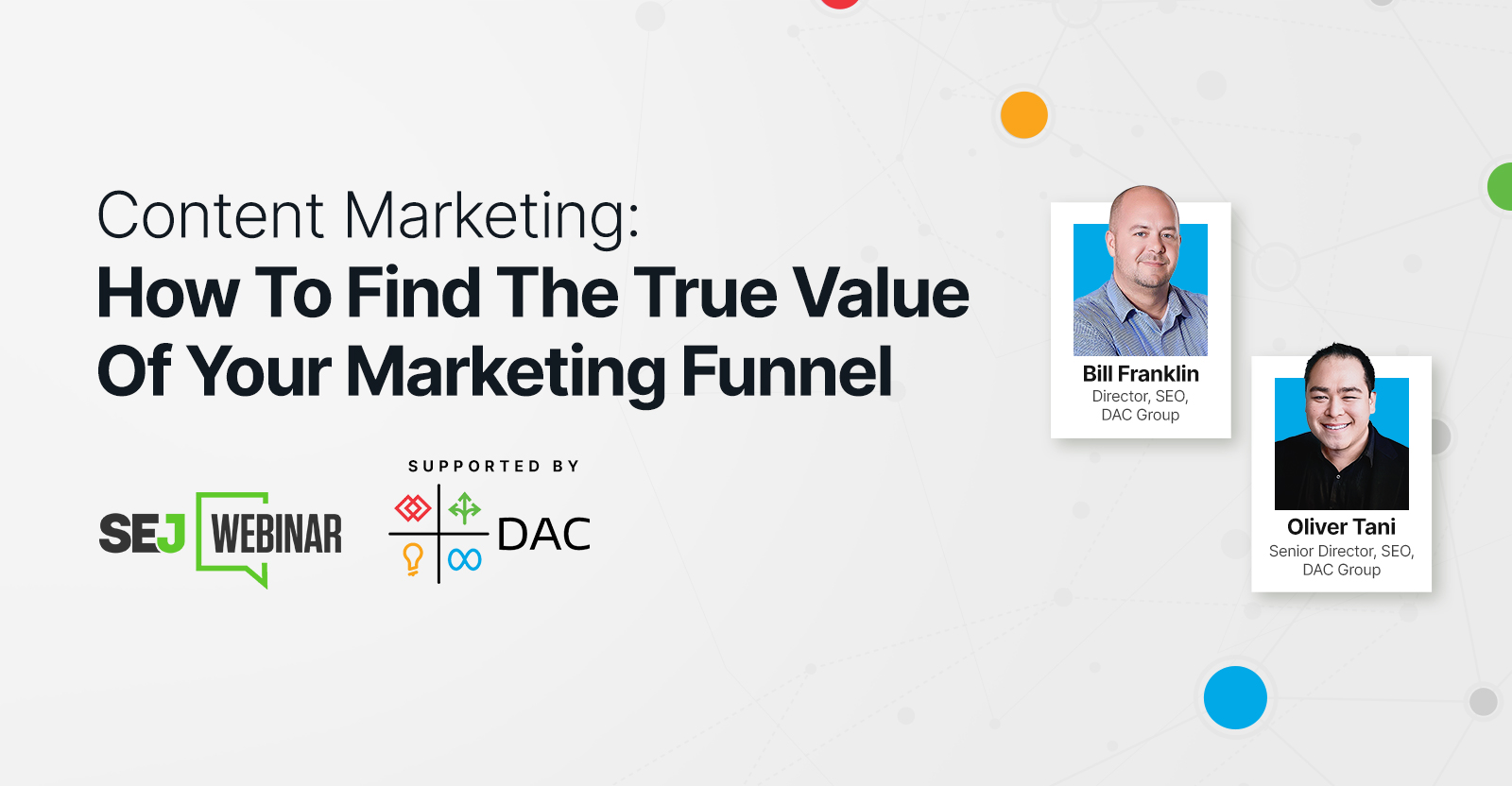
Understanding the impact of your content at every touchpoint of the customer journey is essential – but that’s easier said than done. From attracting potential leads to nurturing them into loyal customers, there are many touchpoints to look into.
So how do you identify and take advantage of these opportunities for growth?
Watch this on-demand webinar and learn a comprehensive approach for measuring the value of your content initiatives, so you can optimize resource allocation for maximum impact.
You’ll learn:
- Fresh methods for measuring your content’s impact.
- Fascinating insights using first-touch attribution, and how it differs from the usual last-touch perspective.
- Ways to persuade decision-makers to invest in more content by showcasing its value convincingly.
With Bill Franklin and Oliver Tani of DAC Group, we unravel the nuances of attribution modeling, emphasizing the significance of layering first-touch and last-touch attribution within your measurement strategy.
Check out these insights to help you craft compelling content tailored to each stage, using an approach rooted in first-hand experience to ensure your content resonates.
Whether you’re a seasoned marketer or new to content measurement, this webinar promises valuable insights and actionable tactics to elevate your SEO game and optimize your content initiatives for success.
View the slides below or check out the full webinar for all the details.
SEO
How to Find and Use Competitor Keywords
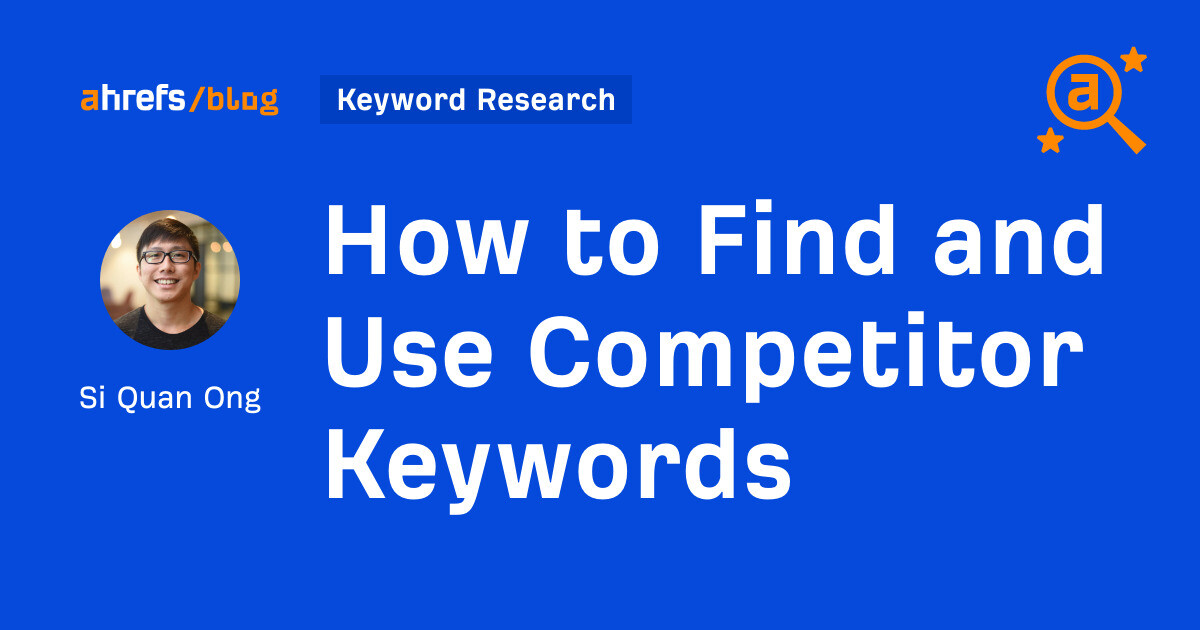
Competitor keywords are the keywords your rivals rank for in Google’s search results. They may rank organically or pay for Google Ads to rank in the paid results.
Knowing your competitors’ keywords is the easiest form of keyword research. If your competitors rank for or target particular keywords, it might be worth it for you to target them, too.
There is no way to see your competitors’ keywords without a tool like Ahrefs, which has a database of keywords and the sites that rank for them. As far as we know, Ahrefs has the biggest database of these keywords.
How to find all the keywords your competitor ranks for
- Go to Ahrefs’ Site Explorer
- Enter your competitor’s domain
- Go to the Organic keywords report
The report is sorted by traffic to show you the keywords sending your competitor the most visits. For example, Mailchimp gets most of its organic traffic from the keyword “mailchimp.”


Since you’re unlikely to rank for your competitor’s brand, you might want to exclude branded keywords from the report. You can do this by adding a Keyword > Doesn’t contain filter. In this example, we’ll filter out keywords containing “mailchimp” or any potential misspellings:
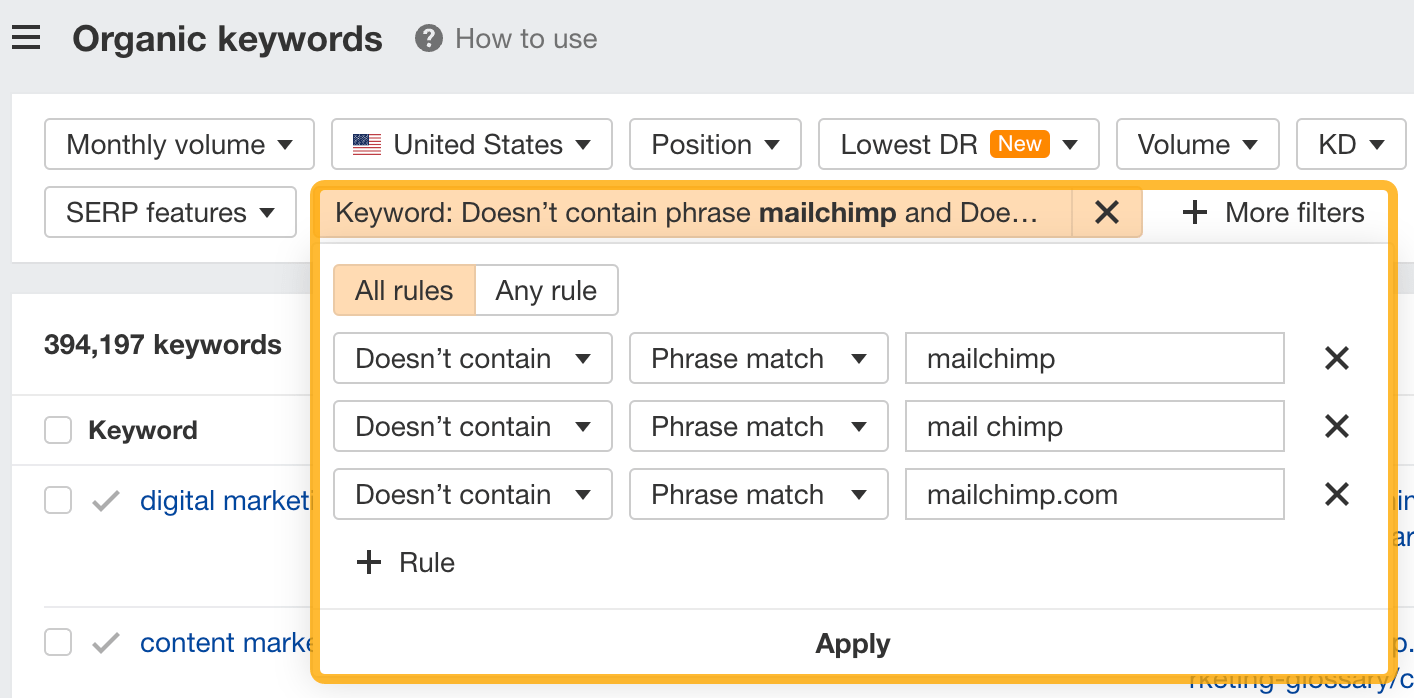

If you’re a new brand competing with one that’s established, you might also want to look for popular low-difficulty keywords. You can do this by setting the Volume filter to a minimum of 500 and the KD filter to a maximum of 10.
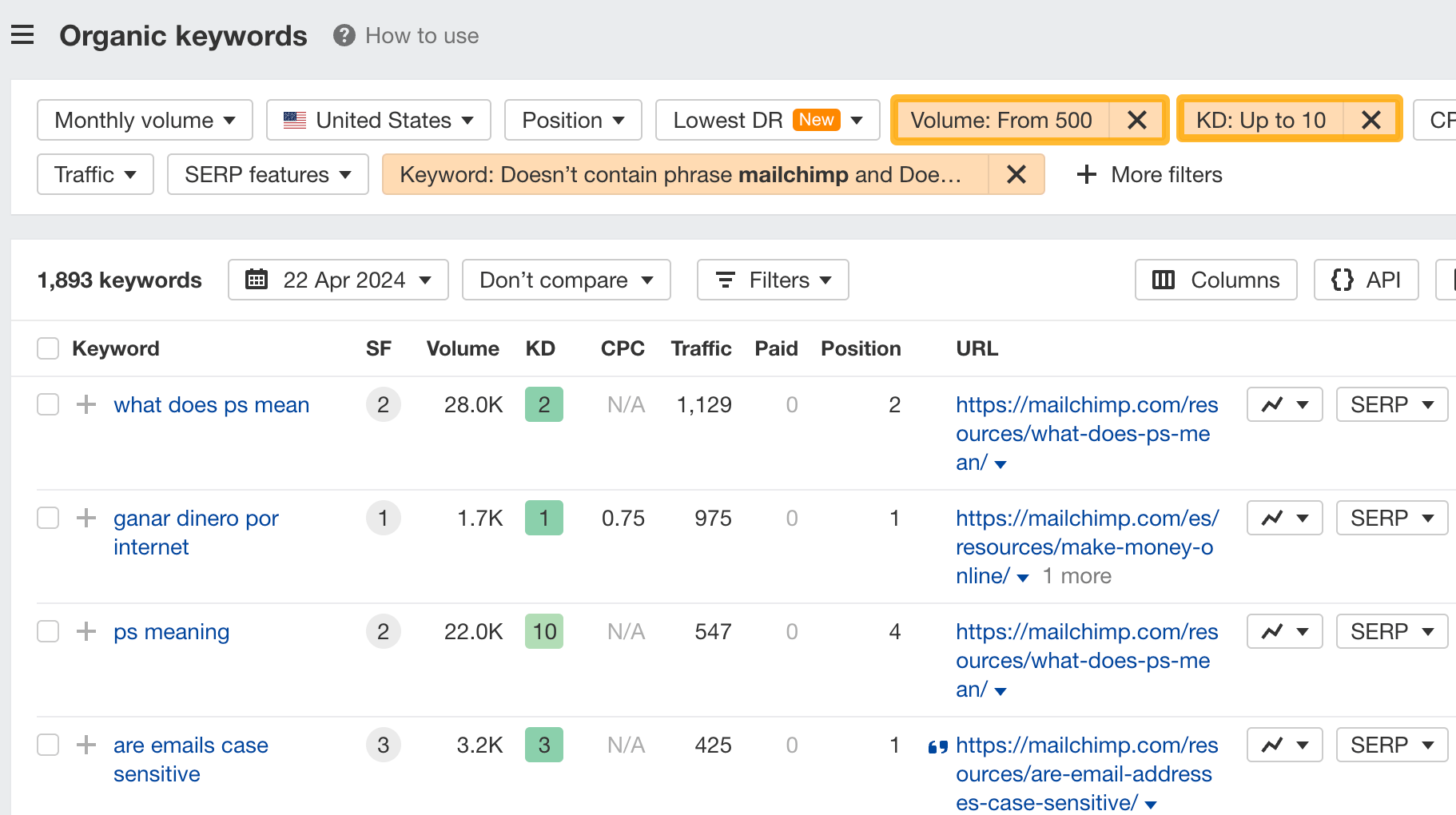

How to find keywords your competitor ranks for, but you don’t
- Go to Competitive Analysis
- Enter your domain in the This target doesn’t rank for section
- Enter your competitor’s domain in the But these competitors do section
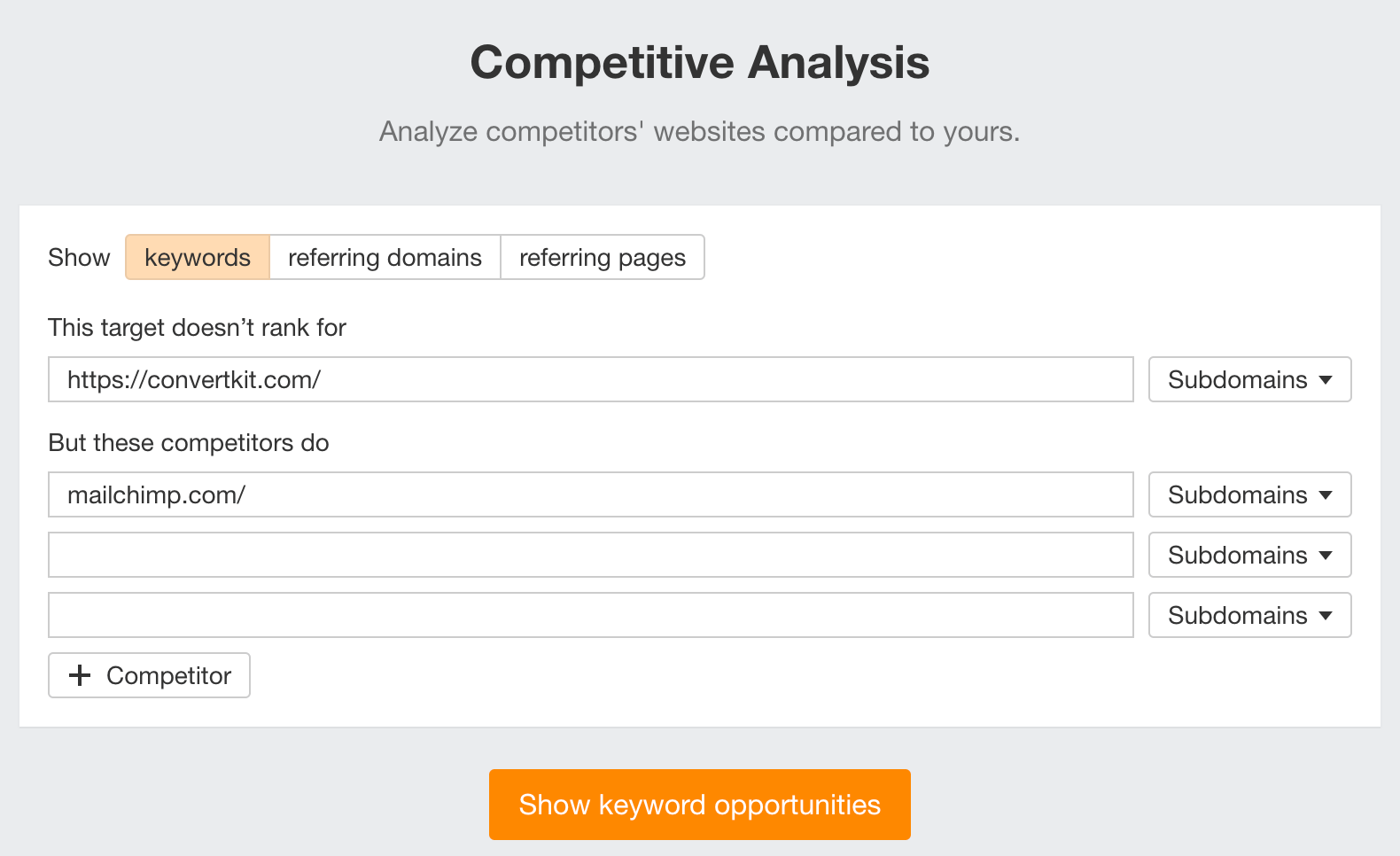

Hit “Show keyword opportunities,” and you’ll see all the keywords your competitor ranks for, but you don’t.
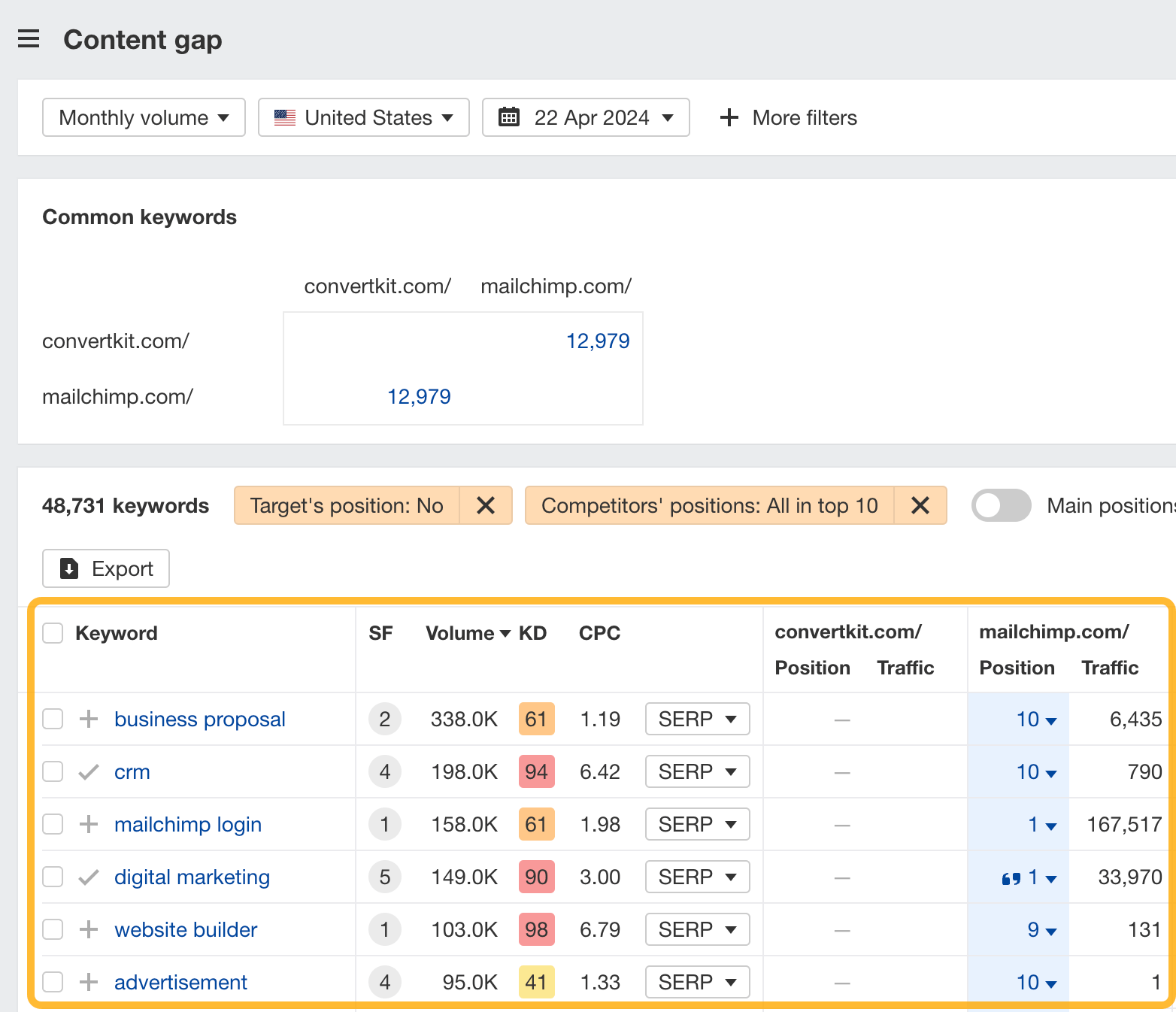

You can also add a Volume and KD filter to find popular, low-difficulty keywords in this report.
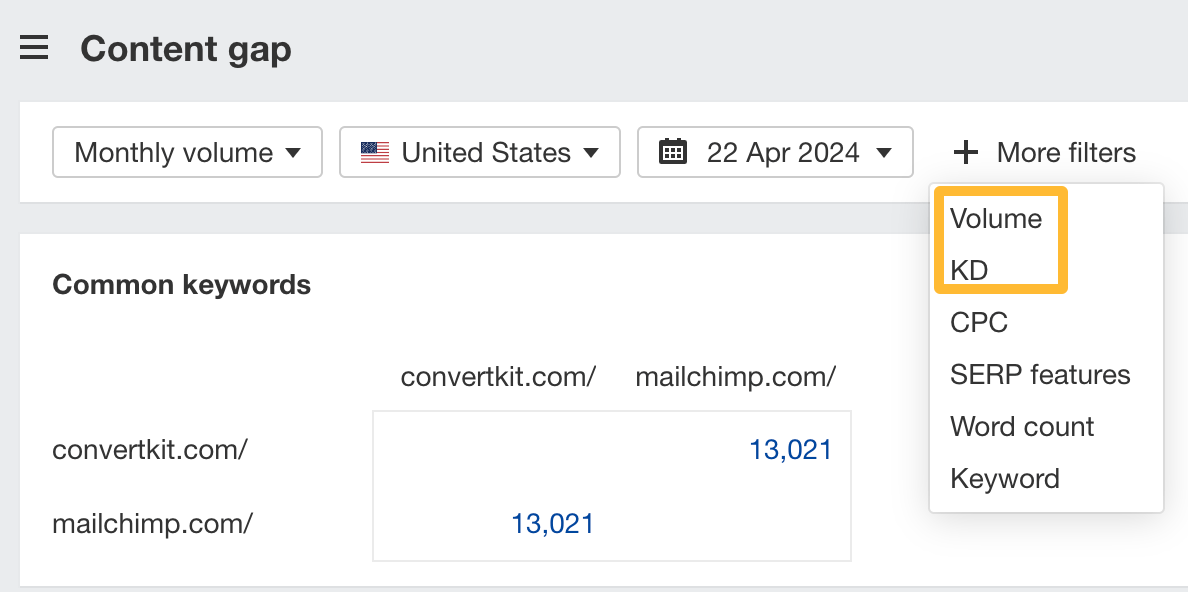

How to find keywords multiple competitors rank for, but you don’t
- Go to Competitive Analysis
- Enter your domain in the This target doesn’t rank for section
- Enter the domains of multiple competitors in the But these competitors do section
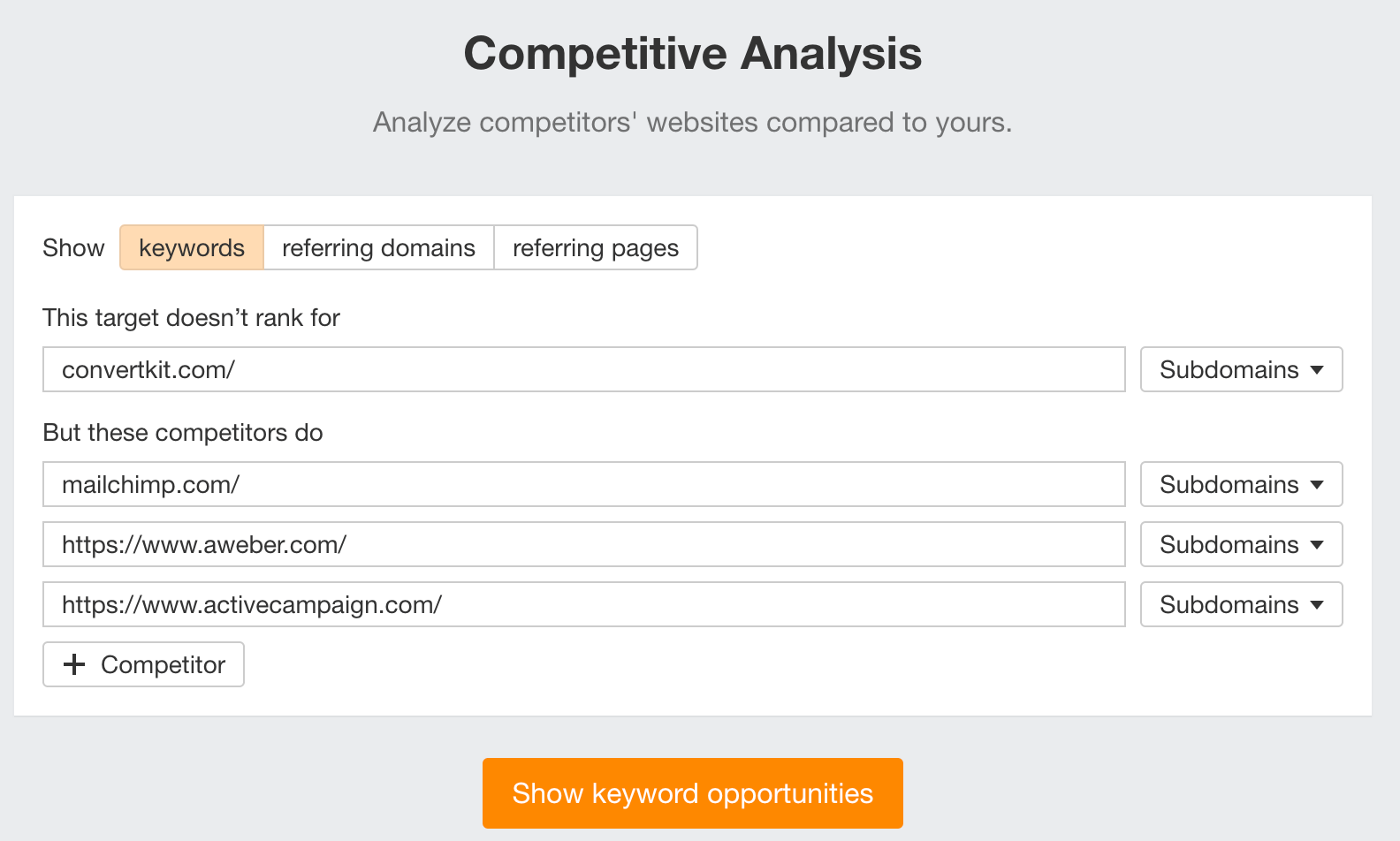

You’ll see all the keywords that at least one of these competitors ranks for, but you don’t.
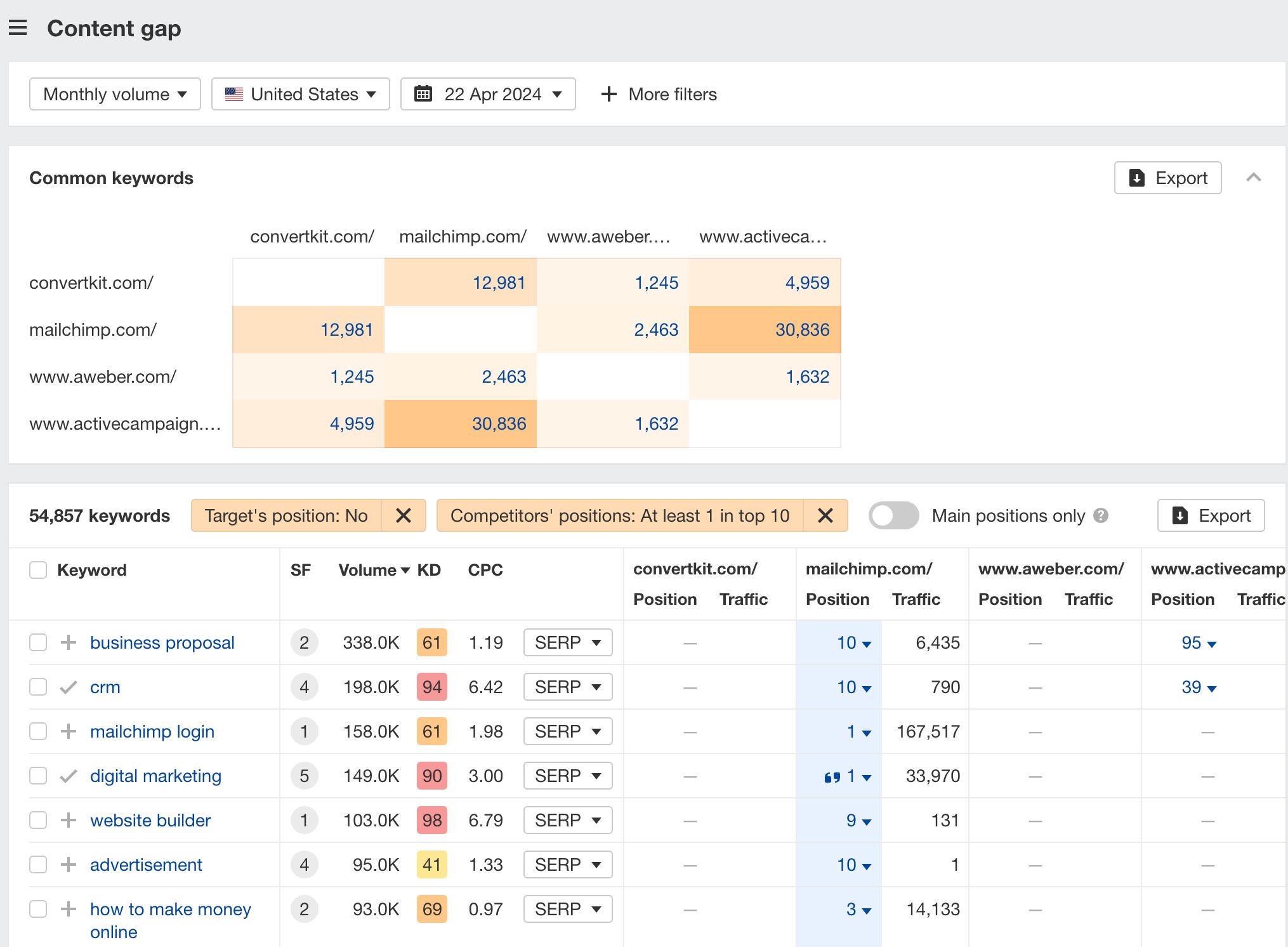

You can also narrow the list down to keywords that all competitors rank for. Click on the Competitors’ positions filter and choose All 3 competitors:
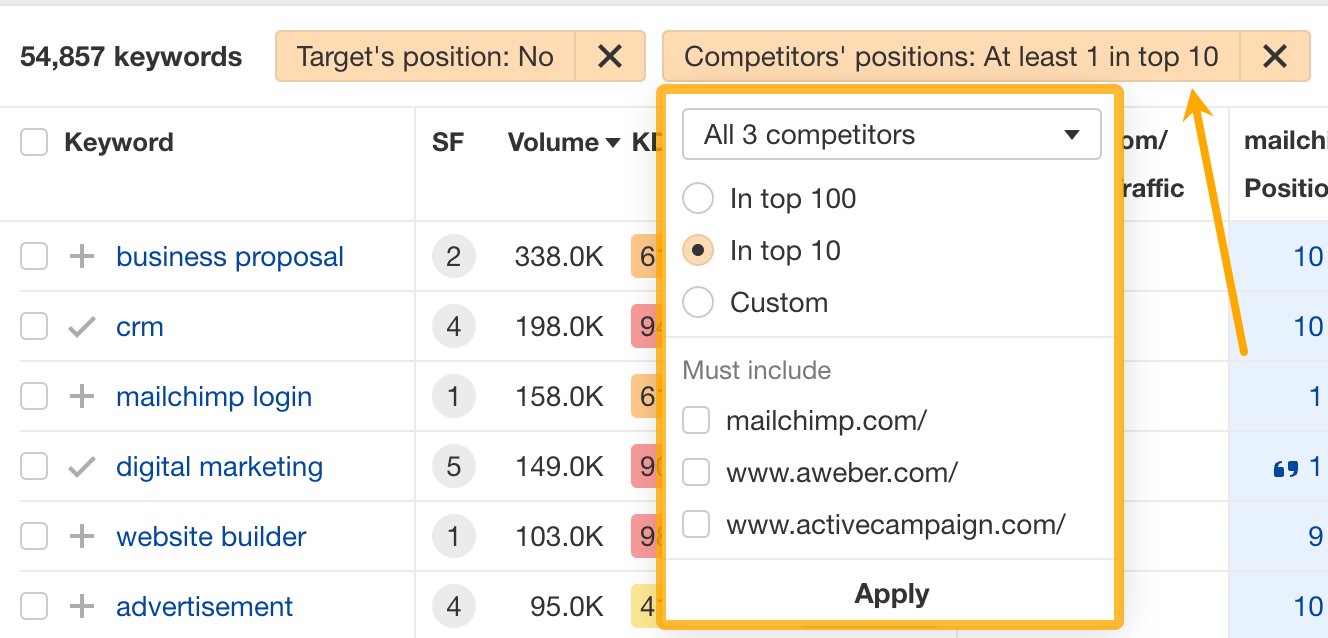

- Go to Ahrefs’ Site Explorer
- Enter your competitor’s domain
- Go to the Paid keywords report
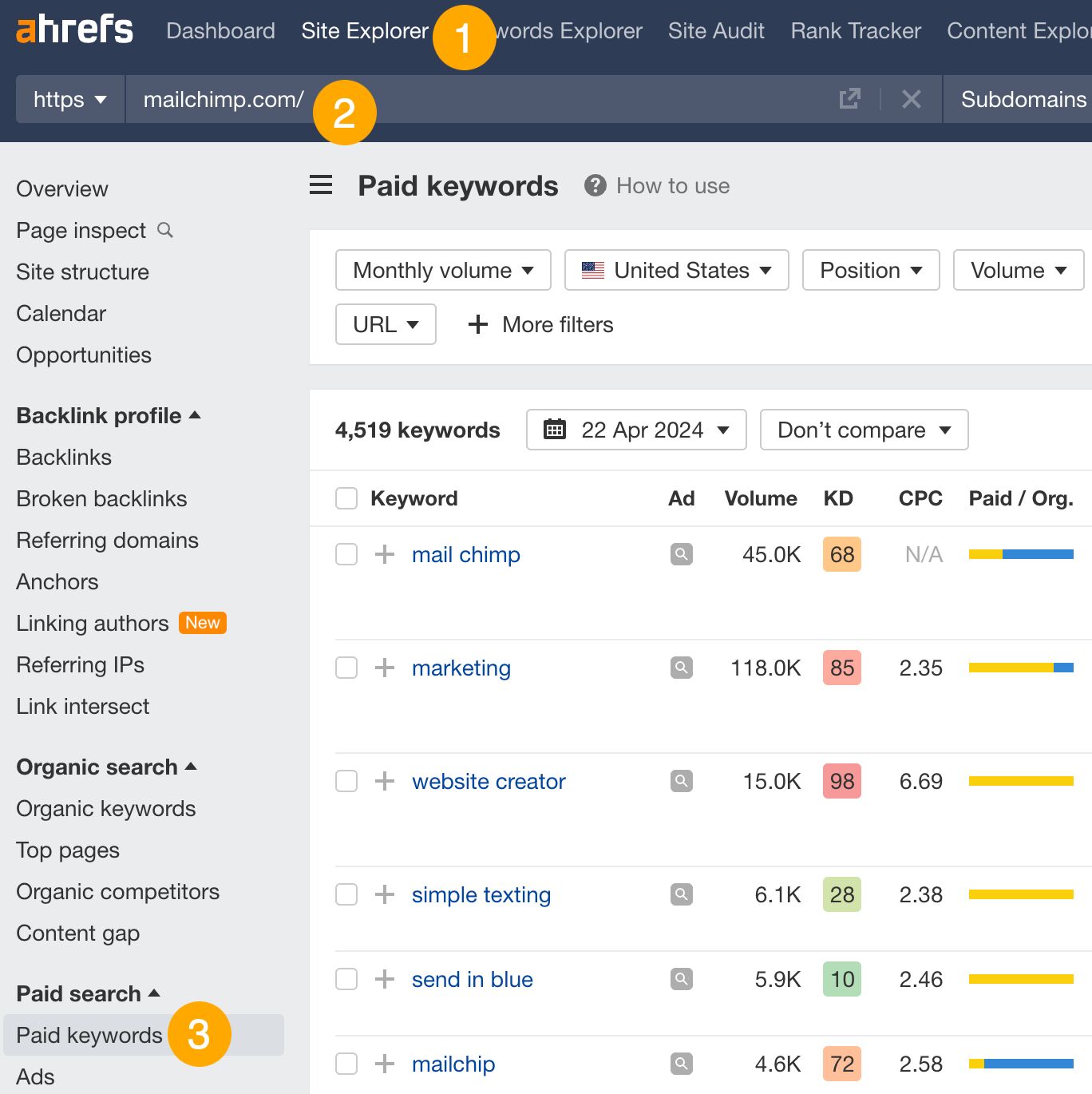

This report shows you the keywords your competitors are targeting via Google Ads.
Since your competitor is paying for traffic from these keywords, it may indicate that they’re profitable for them—and could be for you, too.
You know what keywords your competitors are ranking for or bidding on. But what do you do with them? There are basically three options.
1. Create pages to target these keywords
You can only rank for keywords if you have content about them. So, the most straightforward thing you can do for competitors’ keywords you want to rank for is to create pages to target them.
However, before you do this, it’s worth clustering your competitor’s keywords by Parent Topic. This will group keywords that mean the same or similar things so you can target them all with one page.
Here’s how to do that:
- Export your competitor’s keywords, either from the Organic Keywords or Content Gap report
- Paste them into Keywords Explorer
- Click the “Clusters by Parent Topic” tab
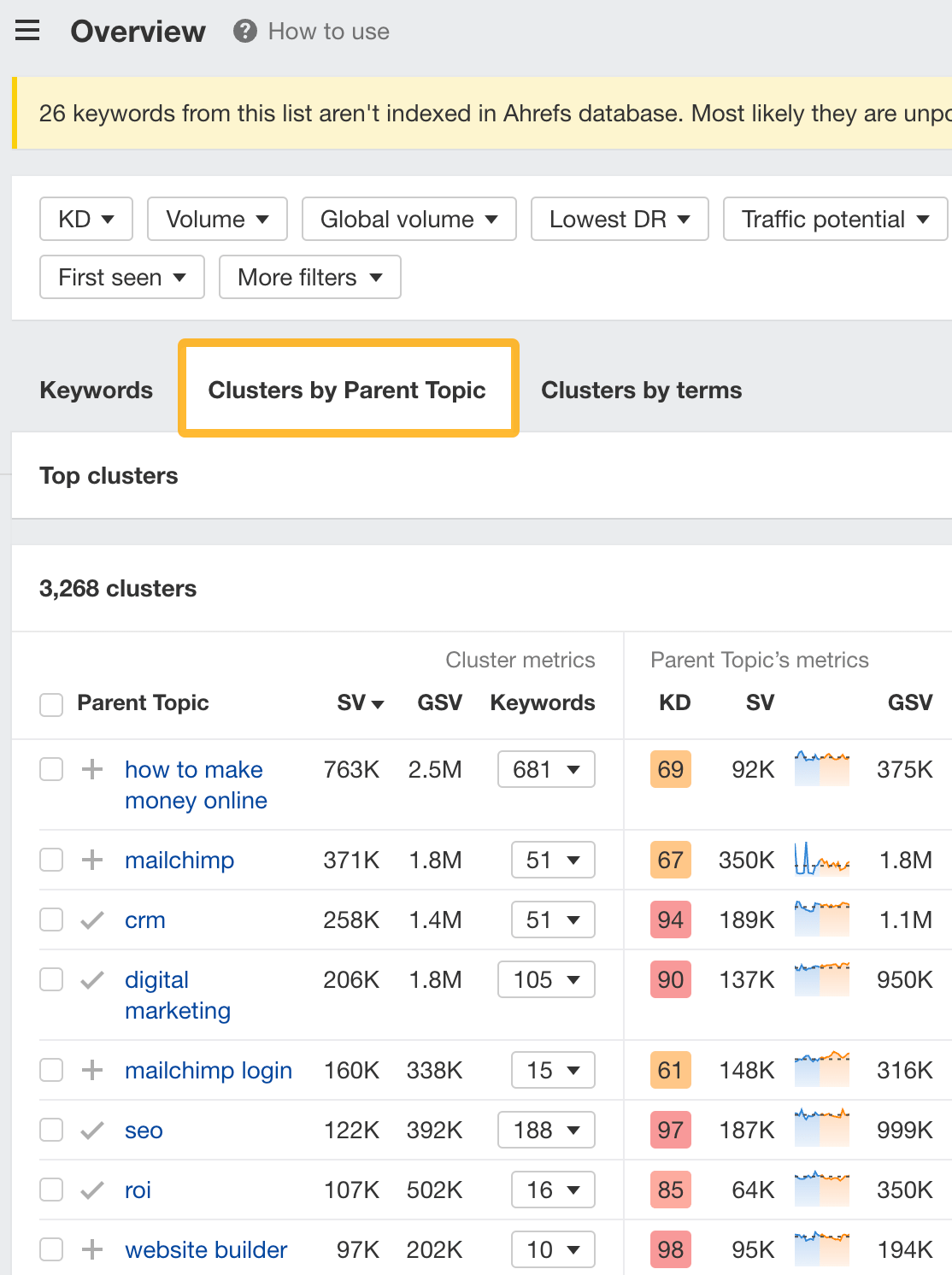

For example, MailChimp ranks for keywords like “what is digital marketing” and “digital marketing definition.” These and many others get clustered under the Parent Topic of “digital marketing” because people searching for them are all looking for the same thing: a definition of digital marketing. You only need to create one page to potentially rank for all these keywords.
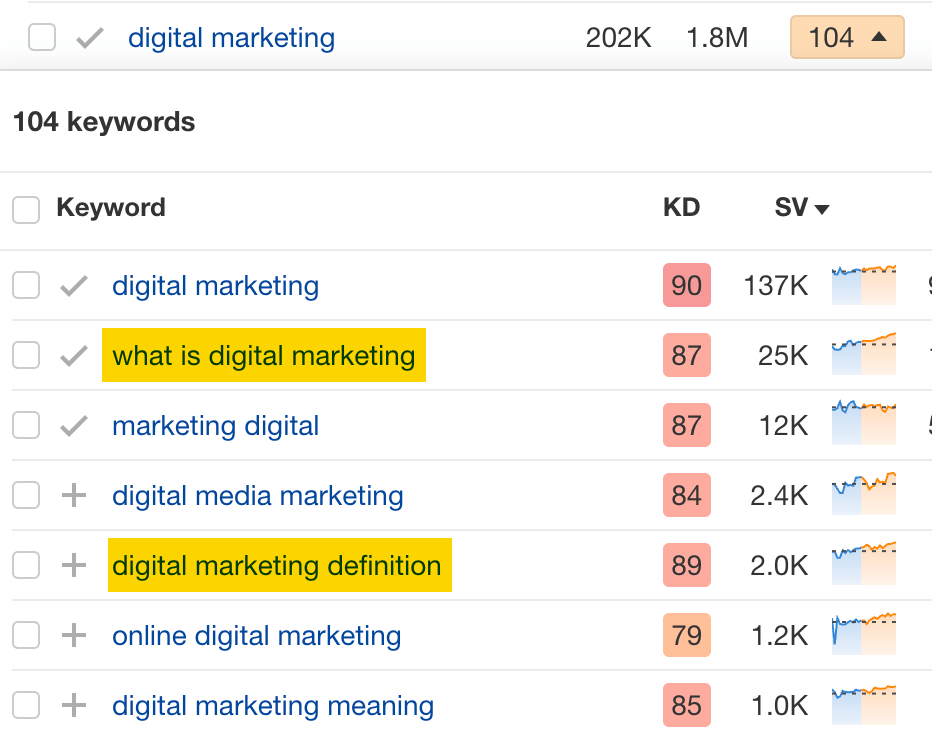

2. Optimize existing content by filling subtopics
You don’t always need to create new content to rank for competitors’ keywords. Sometimes, you can optimize the content you already have to rank for them.
How do you know which keywords you can do this for? Try this:
- Export your competitor’s keywords
- Paste them into Keywords Explorer
- Click the “Clusters by Parent Topic” tab
- Look for Parent Topics you already have content about
For example, if we analyze our competitor, we can see that seven keywords they rank for fall under the Parent Topic of “press release template.”


If we search our site, we see that we already have a page about this topic.


If we click the caret and check the keywords in the cluster, we see keywords like “press release example” and “press release format.”
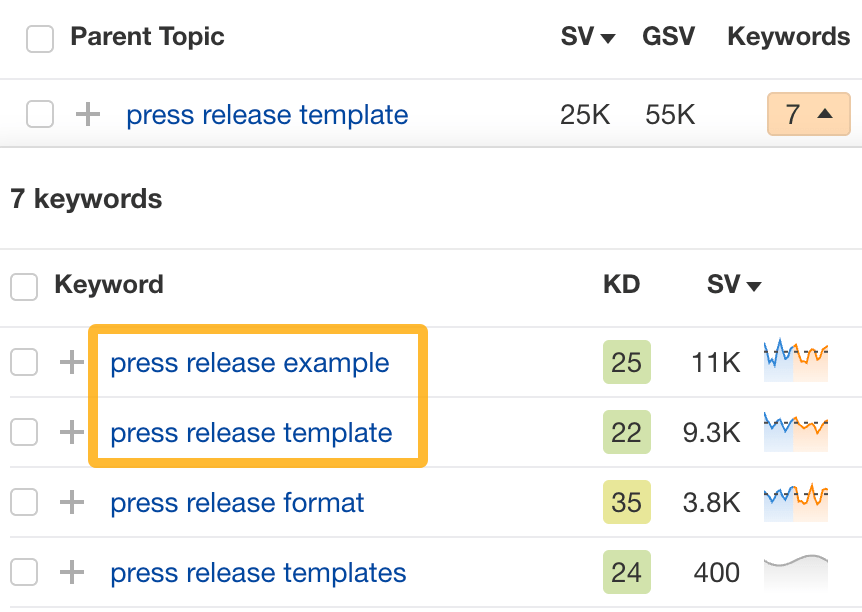

To rank for the keywords in the cluster, we can probably optimize the page we already have by adding sections about the subtopics of “press release examples” and “press release format.”
3. Target these keywords with Google Ads
Paid keywords are the simplest—look through the report and see if there are any relevant keywords you might want to target, too.
For example, Mailchimp is bidding for the keyword “how to create a newsletter.”


If you’re ConvertKit, you may also want to target this keyword since it’s relevant.
If you decide to target the same keyword via Google Ads, you can hover over the magnifying glass to see the ads your competitor is using.
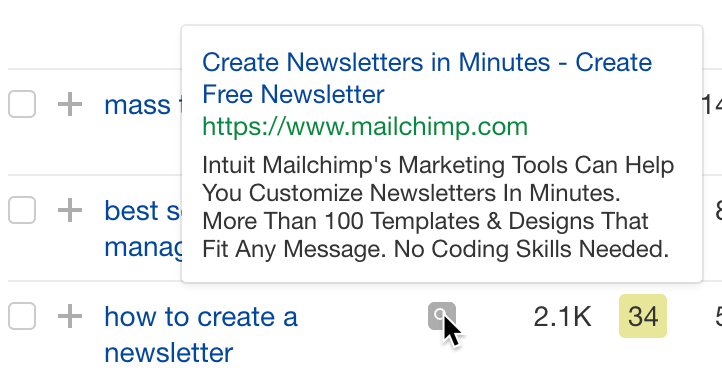

You can also see the landing page your competitor directs ad traffic to under the URL column.


Learn more
Check out more tutorials on how to do competitor keyword analysis:
SEO
Google Confirms Links Are Not That Important
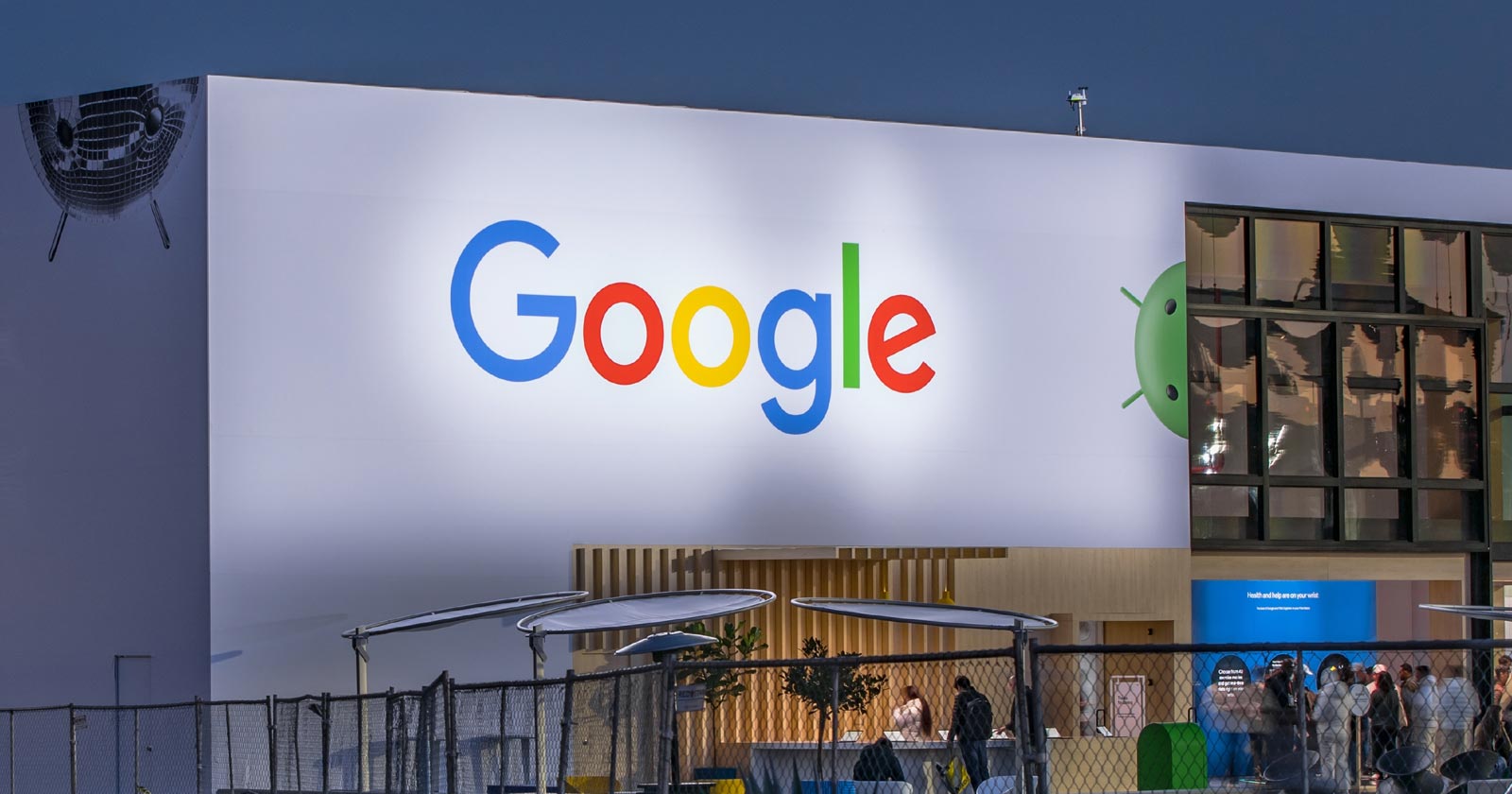
Google’s Gary Illyes confirmed at a recent search marketing conference that Google needs very few links, adding to the growing body of evidence that publishers need to focus on other factors. Gary tweeted confirmation that he indeed say those words.
Background Of Links For Ranking
Links were discovered in the late 1990’s to be a good signal for search engines to use for validating how authoritative a website is and then Google discovered soon after that anchor text could be used to provide semantic signals about what a webpage was about.
One of the most important research papers was Authoritative Sources in a Hyperlinked Environment by Jon M. Kleinberg, published around 1998 (link to research paper at the end of the article). The main discovery of this research paper is that there is too many web pages and there was no objective way to filter search results for quality in order to rank web pages for a subjective idea of relevance.
The author of the research paper discovered that links could be used as an objective filter for authoritativeness.
Kleinberg wrote:
“To provide effective search methods under these conditions, one needs a way to filter, from among a huge collection of relevant pages, a small set of the most “authoritative” or ‘definitive’ ones.”
This is the most influential research paper on links because it kick-started more research on ways to use links beyond as an authority metric but as a subjective metric for relevance.
Objective is something factual. Subjective is something that’s closer to an opinion. The founders of Google discovered how to use the subjective opinions of the Internet as a relevance metric for what to rank in the search results.
What Larry Page and Sergey Brin discovered and shared in their research paper (The Anatomy of a Large-Scale Hypertextual Web Search Engine – link at end of this article) was that it was possible to harness the power of anchor text to determine the subjective opinion of relevance from actual humans. It was essentially crowdsourcing the opinions of millions of website expressed through the link structure between each webpage.
What Did Gary Illyes Say About Links In 2024?
At a recent search conference in Bulgaria, Google’s Gary Illyes made a comment about how Google doesn’t really need that many links and how Google has made links less important.
Patrick Stox tweeted about what he heard at the search conference:
” ‘We need very few links to rank pages… Over the years we’ve made links less important.’ @methode #serpconf2024″
Google’s Gary Illyes tweeted a confirmation of that statement:
“I shouldn’t have said that… I definitely shouldn’t have said that”
Why Links Matter Less
The initial state of anchor text when Google first used links for ranking purposes was absolutely non-spammy, which is why it was so useful. Hyperlinks were primarily used as a way to send traffic from one website to another website.
But by 2004 or 2005 Google was using statistical analysis to detect manipulated links, then around 2004 “powered-by” links in website footers stopped passing anchor text value, and by 2006 links close to the words “advertising” stopped passing link value, links from directories stopped passing ranking value and by 2012 Google deployed a massive link algorithm called Penguin that destroyed the rankings of likely millions of websites, many of which were using guest posting.
The link signal eventually became so bad that Google decided in 2019 to selectively use nofollow links for ranking purposes. Google’s Gary Illyes confirmed that the change to nofollow was made because of the link signal.
Google Explicitly Confirms That Links Matter Less
In 2023 Google’s Gary Illyes shared at a PubCon Austin that links were not even in the top 3 of ranking factors. Then in March 2024, coinciding with the March 2024 Core Algorithm Update, Google updated their spam policies documentation to downplay the importance of links for ranking purposes.
The documentation previously said:
“Google uses links as an important factor in determining the relevancy of web pages.”
The update to the documentation that mentioned links was updated to remove the word important.
Links are not just listed as just another factor:
“Google uses links as a factor in determining the relevancy of web pages.”
At the beginning of April Google’s John Mueller advised that there are more useful SEO activities to engage on than links.
Mueller explained:
“There are more important things for websites nowadays, and over-focusing on links will often result in you wasting your time doing things that don’t make your website better overall”
Finally, Gary Illyes explicitly said that Google needs very few links to rank webpages and confirmed it.
I shouldn’t have said that… I definitely shouldn’t have said that
— Gary 鯨理/경리 Illyes (so official, trust me) (@methode) April 19, 2024
Why Google Doesn’t Need Links
The reason why Google doesn’t need many links is likely because of the extent of AI and natural language undertanding that Google uses in their algorithms. Google must be highly confident in its algorithm to be able to explicitly say that they don’t need it.
Way back when Google implemented the nofollow into the algorithm there were many link builders who sold comment spam links who continued to lie that comment spam still worked. As someone who started link building at the very beginning of modern SEO (I was the moderator of the link building forum at the #1 SEO forum of that time), I can say with confidence that links have stopped playing much of a role in rankings beginning several years ago, which is why I stopped about five or six years ago.
Read the research papers
Authoritative Sources in a Hyperlinked Environment – Jon M. Kleinberg (PDF)
The Anatomy of a Large-Scale Hypertextual Web Search Engine
Featured Image by Shutterstock/RYO Alexandre
-

 PPC4 days ago
PPC4 days ago19 Best SEO Tools in 2024 (For Every Use Case)
-

 MARKETING7 days ago
MARKETING7 days agoWill Google Buy HubSpot? | Content Marketing Institute
-
SEARCHENGINES7 days ago
Daily Search Forum Recap: April 16, 2024
-

 SEO7 days ago
SEO7 days agoGoogle Clarifies Vacation Rental Structured Data
-

 MARKETING6 days ago
MARKETING6 days agoStreamlining Processes for Increased Efficiency and Results
-
SEARCHENGINES6 days ago
Daily Search Forum Recap: April 17, 2024
-

 PPC7 days ago
PPC7 days agoHow to Collect & Use Customer Data the Right (& Ethical) Way
-

 SEO6 days ago
SEO6 days agoAn In-Depth Guide And Best Practices For Mobile SEO






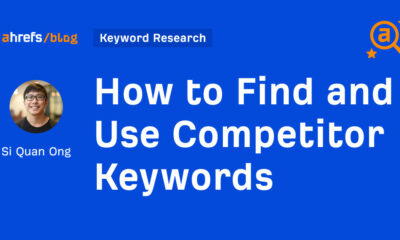









You must be logged in to post a comment Login